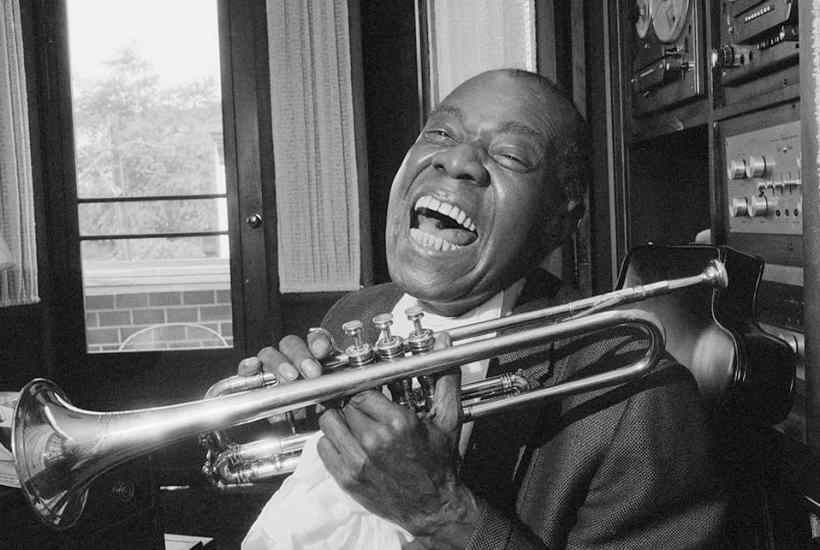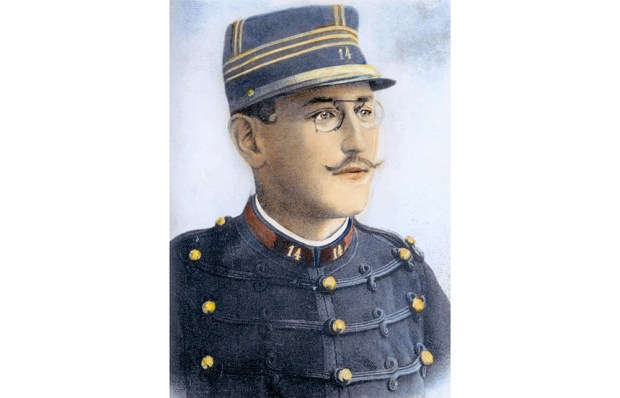We’ve all met the sort of facetious oaf who orders any non-giggling woman to ‘Cheer up, love, it might never happen’. As Timothy Hampton grasps, enforced cheeriness feels about as much fun as compulsory games. His invigorating book about the quest for true cheerfulness in literature and philosophy dismantles the various ‘prosthetic or counterfeit’ versions of the real thing that bullies, bosses, self-help gurus and household tyrants inflict on their victims. Jane Austen’s heroines, as he shows, chafe against the elevation of cheerfulness into a ‘social norm’. It suffocates them like stays: ‘Thou shalt be cheerful, at least if thou art woman.’
For sound reasons, the prospect of cheerfulness fails to gladden many modern hearts. When that epic grouch Theodor Adorno asked ‘Is Art Cheerful?’, his answer was no surprise. In Adorno’s stricken 20th century, ‘any gaiety in art’ implied ‘an avoidance of the pain of history’. Good cheer had withered into a fake fix peddled by self-improvement merchants, ‘an affective tool that can reconcile you to drudgery’ – or even a breakfast cereal with, aptly, a hole in the middle (General Mills launched Cheerios in 1941).
So Hampton, a professor of literature at Berkeley, has serious work to do when he sets out to rescue the legacy of cheerfulness from beaming charlatans and genial thugs. His study spans more than half a millennium of literary, philosophical and theological examples, from Julian of Norwich to Scott Fitzgerald, with a closing tribute to the genius who redeemed cheerfulness from kitsch: Louis Armstrong.
This isn’t a study of grander conditions such as hope, optimism or even happiness. Neither is it just a gloss on Stoic notions of equilibrium (euthymia and tranquillitas), though good cheer might stem from a well-balanced life. Hampton quotes Spinoza: ‘Cheerfulness cannot be excessive; it is always good.’ But the very fact that it ‘lives on the edge of… more intense emotions’ may make it invisible. Besides, the intellectual smart money has always invested in its perennially on-trend antitheses: melancholy, accidie, despair, ennui, Weltschmerz and their tribe of glum kin.
Metaphysicians and visionaries distrust cheerfulness as a transient, superficial quality – neither grounded in a stable state nor a key to transforming change. Exactly so: that’s what makes it valuable. It ‘bridges and mediates’ between interior and exterior selves. Its power works from the outside in. Forget your ‘essential’ nature or disposition. As Madame de Staël wrote: ‘What one does to please others ends up shaping what one feels oneself.’ This ‘performative’ aspect of cheerfulness Hampton reads not as a taint but a blessing. No one need be innately cheerful. Act it and you become it.
Its meaning, though, has evolved across time. Hampton tracks a conceptual journey from the outward demeanour of the Middle Ages – the face you showed the world – through Renaissance ‘rituals of hospitality’ to the cheerful philosophies of Montaigne, Hume and Nietzsche. By Calvin’s time, he explains, injunctions to good cheer could have a coercive edge; demands to see a happy face became a ‘policing tool’. In contrast, Montaigne in his Essayspursued ‘gay and social wisdom’ as a cautious sceptic who cultivated private freedom in a violent world: ‘He brings his own bridle to the paddock.’ David Hume praised its ‘contagious’ force: a cheerful guest will light up a roomful of grumps. But Hampton sees the clubbable cheer of the Enlightenment as a social glue for privileged groups, ‘clearly and firmly in their own element’ – or else a behavioural straitjacket for restive women in Austen’s age.
Later, the canny cheeriness of Dickens’s upwardly mobile heroes – and several rogues – indicates that the quality has become ‘a virtual job requirement for the low-born, ambitious personality’. For the Victorians and their heirs, cheerfulness grabs advantage and pays dividends. Industrial capitalism makes smiley faces mask toil and fear. Hampton charts an epidemic of wheedling jollity, from the first scouting manuals (a Scout ‘must never go about with a sulky air’) to Norman Vincent Peale’s mega-selling The Power of Positive Thinking. A blizzard of folksy uplift gave ‘spiritual and psychological cover to an ideology of economic warfare’. Still, Nietzsche and his poetic disciples raged against the machine, seeking their ‘gay science’ in disruptive style and defining art as a ‘cheerful practice’.
Hampton writes muscular, often subtle, suitably high-spirited prose. This compact book on an enormous theme inevitably resembles more of a patchwork than a panorama. It still manages to make Erasmus, Shakespeare, Adam Smith and Louis Armstrong – who confected his own ever-ebullient persona and ironically performed it with ‘subversive self-delight’ – live together, cheerfully, on the same page. And if the current pandemic did not quite (as Hampton’s peroration hopes) lead to ‘a reinvention of cheer’, it did prove our enduring need for a low-cost, open-access virtue that ‘offers no political programme’ – yet can ‘transform the moral self’.
Got something to add? Join the discussion and comment below.
Get 10 issues for just $10
Subscribe to The Spectator Australia today for the next 10 magazine issues, plus full online access, for just $10.
You might disagree with half of it, but you’ll enjoy reading all of it. Try your first month for free, then just $2 a week for the remainder of your first year.














Comments
Don't miss out
Join the conversation with other Spectator Australia readers. Subscribe to leave a comment.
SUBSCRIBEAlready a subscriber? Log in